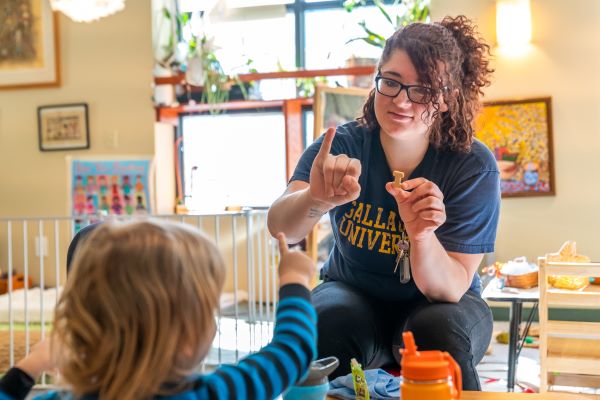
ASL Users Are Dual Language Learners
Children who use ASL at home or who are learning ASL are considered dual language learners. Being a dual language learner comes with increased cognitive and linguistic skill. Learn more about the amazing benefits of being a dual language learner and how to intentionally support their everyday learning.
You can learn ASL on the go! Download the Ready DLL App to learn 23 ASL words and phrases that support everyday communication with young children.

Hearing Loss in Young Children
ASL benefits all children, but especially children who are deaf or hard of hearing. If a child you serve a child who has been identified with a permanent hearing loss, explore these tips to support their participation in Head Start programs. If you’re an educator or work with parents and need strategies for accommodating a child’s hearing loss in their educational environment check out these suggestions. If you’re curious about hearing screenings and want to learn more, review these quick facts about hearing screenings for young children.

Children with Disabilities
The goal for all children in Head Start programs, including children with disabilities, is to be successful learners. It’s important to understand what services are available to your team to coordinate support for children and their families. Learn new strategies to ensure children with disabilities and hearing loss are provided with equal learning opportunities, for infants and toddlers, as well as preschool-age children.

Home Visitors and ASL
As a home visitor, you may serve families who use ASL at home or who are interested in learning ASL to support their child. If a family uses ASL at home, learning a few signs to assist in communicating with them is a great way to build rapport and trust with families. Learn basic signs and phrases in the video section on this page. Explore research and tips for teaching and using ASL with infants and toddlers and using ASL with families and children who are dual language learners.
 American Sign Language (ASL) is a visual language that uses hand signs, facial expressions, and body language to communicate. It is a complete, natural language that has its own grammar and syntax. ASL is separate from English. It's a living, evolving language, just like any other.
American Sign Language (ASL) is a visual language that uses hand signs, facial expressions, and body language to communicate. It is a complete, natural language that has its own grammar and syntax. ASL is separate from English. It's a living, evolving language, just like any other.